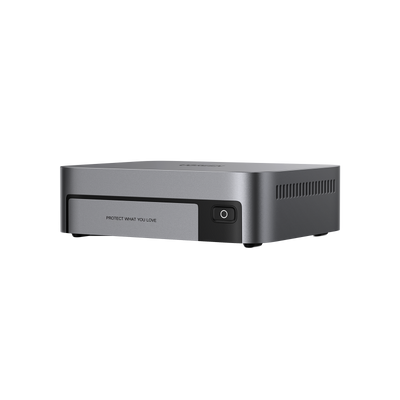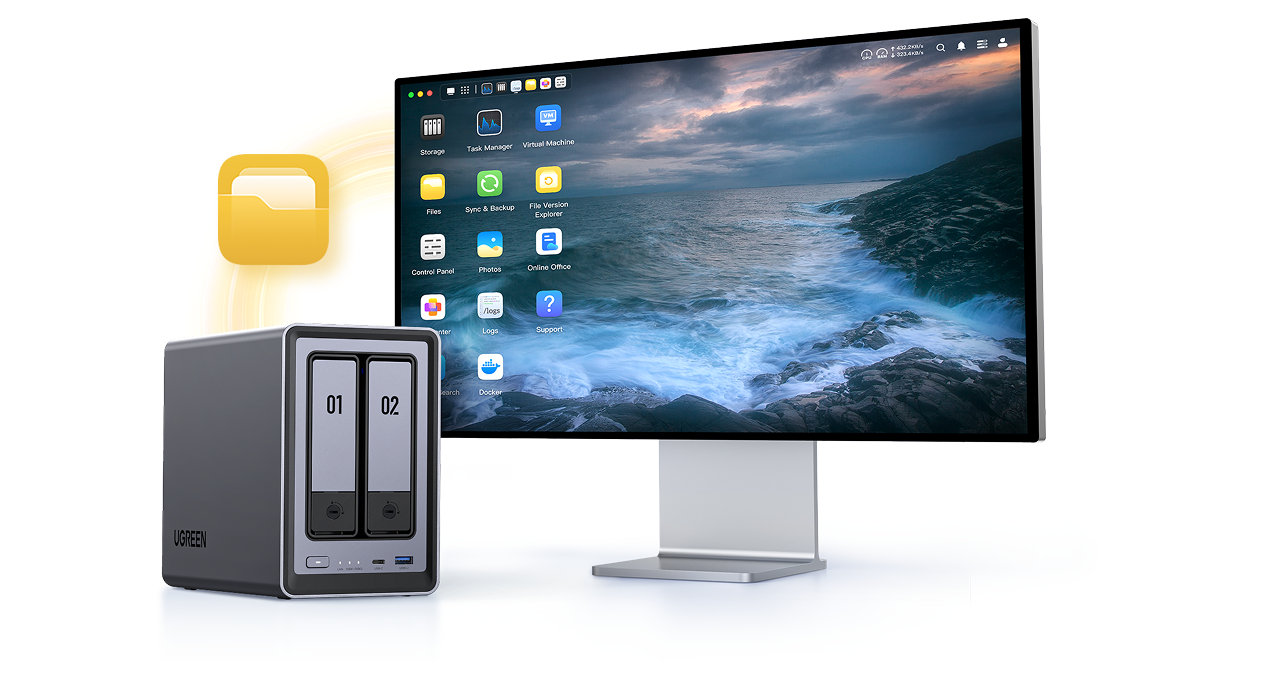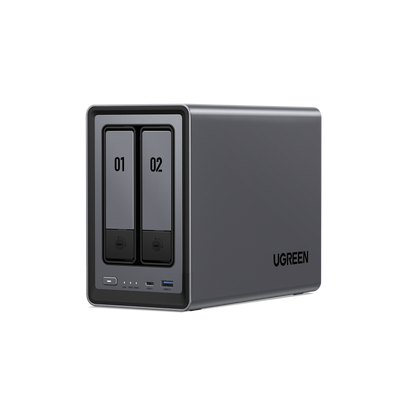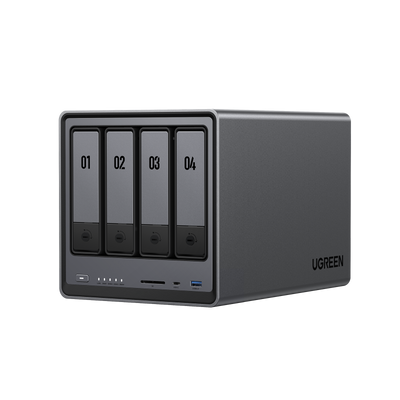Best NAS Storage Systems for 2025
In an age where our work, memories, and creative projects live as files in the digital ether, the question isn’t whether we need more storage, it’s whether we have the right kind of storage. Enter NAS, or Network-Attached Storage: the unsung hero of secure, scalable, always-on data access.
However, not all NAS systems are created equal. With so many options on the market, choosing the right one can feel overwhelming. That’s where this guide comes in. We’ll break down the best NAS storage systems for 2025, exploring their key features, pros, and cons, so you can make an informed decision.

Key Takeaways:
- NAS systems in 2025 offer more than storage—they provide secure, scalable, always-on access to data with features like RAID protection, remote access, and cloud integration.
- Key buying factors include CPU power, RAM, drive bay count, scalability, encryption, and remote access options tailored to your workload.
- Models like the UGREEN NASync DXP2800 and DXP4800 Plus offer beginner-friendly setup and powerful media streaming, while the DXP480T Plus targets creative pros with NVMe performance and 10GbE networking.
- Modern NAS devices emphasize energy efficiency, hybrid cloud workflows, and robust security, evolving into smart hubs for data control.
- In the near future, AI-driven NAS systems will not just store files—they’ll manage, organize, and protect them intelligently.
How to Evaluate NAS Systems in 2025
A NAS isn’t a one-size-fits-all purchase. Pick the wrong one, and you’re stuck with sluggish performance, spiralling costs, or security gaps. Highlighting the key features to evaluate, ensuring your NAS isn’t just a box, but a bespoke solution.
1. Performance Hardware
- CPU and RAM: For simple file storage, an Intel Celeron J4125 or similar suffices. But if you’re juggling 4K video transcodes or running virtual machines, you’ll want at least an Intel N100 or better, and 8GB of RAM or more.
- Drive Bays: More bays mean more storage potential. A 2-bay system suits beginners, but a 4-bay or 8-bay offers room to grow.

UGREEN Tips: If you’re solely storing large, static files (think family photos or archives), a bleeding-edge CPU may be overkill. In many home scenarios, doubling RAM delivers more real-world benefit than upgrading from an Intel® N-series. For a more detailed breakdown of what specs matter most at home, check out our guide on how to choose NAS for home.
2. Storage Capacity Scalability
Calculating your ideal capacity needn’t be guesswork. Start by tallying current usage. Got 1TB now? Aim for 2TB or more. A 2-bay NAS might suffice today, but if you foresee mounting terabytes of footage or multi-user workloads, look to 4-bay (or larger) systems with easy expansion units. If you’re unsure which setup fits your needs best, this guide on choosing between 2- and 4-bay NAS down the pros and cons.
UGREEN Tips: Many buyers regret skimping on bays. Choosing a 2-bay device for its low price can force a painful upgrade later—plan ahead to avoid data-migration headaches.
3. Security Features
Data breaches make headlines for a reason. At minimum, your NAS should support AES-256 encryption for both “data at rest” and “data in motion.” Built-in firewalls let you lock down unused ports, while malware scanners can quarantine threats before they spread. Don’t overlook user-level permissions: integration with Active Directory or LDAP means you manage access centrally, reducing the risk of “one-size-fits-all” accounts.
4. Remote Access Cloud Integration
Whether you’re working from a café, at home, or halfway across the country, your NAS should follow.
- VPN tunnelling remains the gold standard, but many vendors now offer zero-config peer-to-peer (P2P) services that feel as simple as clicking a link.
- Hybrid cloud workflows: Look for seamless sync plugins with services like Dropbox or OneDrive, so your most critical files live locally on the NAS, while less-frequent data sits in the cloud.
5. Power Efficiency
A NAS runs round the clock, so energy costs add up. If you prize silence as much as savings, look for models that cut noise and power draw. Some modern NAS units even optimise drive usage, spinning up only when you actually need that batch of backups. To go a step further, consider pairing your system with quiet NAS hard drives that balance efficiency and low acoustics—a smart combo for peaceful, power-conscious setups.
UGREEN Tip: Modern NAS units could trim your bill by 30% compared to older clunkers.
Top 3 NAS Systems for 2025
Below, we’ve handpicked three standout NAS systems for 2025, each tailored to different users: the beginner dipping their toe into NAS waters, the home user craving seamless media streaming, and the power user demanding top-tier performance.
1. UGREEN NASync DXP2800
Best for: First-time buyers and home users.
- Key Solution: Many newcomers find NAS setup intimidating. The UGREEN DXP2800 arrives nearly ready to use, with a guided setup wizard in the web interface. You’ll be sharing files in under 15 minutes, without having to wade through manuals.
- Key specs: Dual-bay chassis with a 12th Gen Intel® N100 processor, support for up to 64TB of storage, and low power consumption at just 12W when idle.
-
Why it stands out: Under £250 (diskless). It’s the number 1 best-seller on Amazon for a reason—simplicity meets reliability.
{{UGPRODUCT}}
2. UGREEN NASync DXP4800 Plus
Best for: Media enthusiasts and growing families.
- Key Solution: Struggling with choppy 4K playback? The DXP4800 Plus, equipped with an Intel Pentium Gold 8505 processor and DDR5 RAM, uses hardware-accelerated transcoding to deliver smooth streaming of your holiday videos on any device. No more buffering.
- Key specs: Four drive bays, Intel Pentium Gold Processor 8505, 8GB RAM (upgradable to 64GB), 2.5 GbE LAN, and 10Gbps USB ports.
-
Why it stands out: Handles 4K streaming and multitasking with ease.
{{UGPRODUCT}}
3. UGREEN NASync DXP480T Plus
Best for: Creative professionals and power users.
- Key Solution: When deadlines loom and 30GB video files refuse to budge, NVMe RAID is the difference between “transfer pending” and “in the edit suite.”
- Key specs: Four M.2 NVMe slots, a 10GbE port, 8GB RAM as standard, and robust metal housing for heat dissipation.
- Fresh perspective: Instead of bolting on an external PCIe card, UGREEN integrates NVMe slots on the motherboard, so you avoid compatibility nightmares and keep your Thunderbolt ports free.
- Why it stands out: True 4-lane throughput per NVMe slot, AES-NI encryption engine.
The Future of NAS Storage Systems
AI will turn NAS into more than a storage box—it’ll be your data’s brain. By 2025, the best NAS systems will use AI to curate, not just collect. They’ll trim the fat, automate the boring bits, and shield what counts. Your NAS won’t be a dusty vault; it’ll be a sharp, savvy partner in your digital life.
Conclusion
In 2025, the best NAS isn’t the one with the biggest capacity or the shiniest tech. It’s the one that slots most seamlessly into your life.





